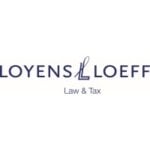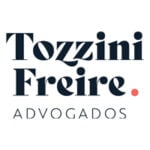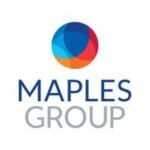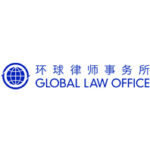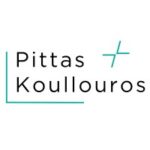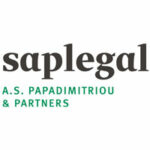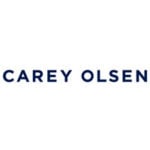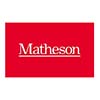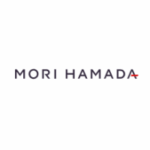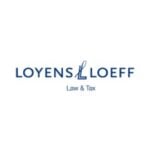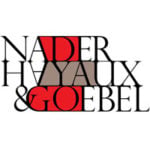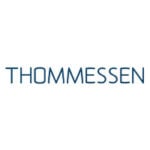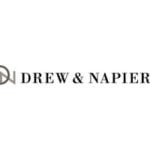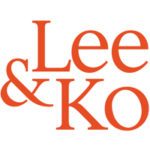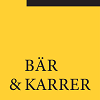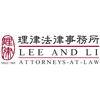-
What proportion of transactions have involved a financial sponsor as a buyer or seller in the jurisdiction over the last 24 months?
Over the last 24 months (from January 2023 until mid-December 2024), there has been a total of 3,092 M&A transactions in France, 1,455 of which (i.e. c. 47%) have involved a financial sponsor as a buyer or seller.1 While the total number of deals has slightly decreased over the period compared to the 2021-2022 period, the involvement of the PE players remain proportionally steady, demonstrating the maturity of the French market.
Footnote(s):
1 This analysis has been conducted on the basis of the data collected by Mergermarket, without applying any materiality threshold.
-
What are the main differences in M&A transaction terms between acquiring a business from a trade seller and financial sponsor backed company in your jurisdiction?
The representations and warranties provided by financial sponsors and management in a secondary LBO are generally limited to core warranties, i.e. title to shares, capacity, authority, absence of conflicts and insolvency, whereas the scope of the representations and warranties granted by trade sellers is substantially wider and will cover operational matters (e.g. compliance with laws, employment, taxes etc.). As to maximize deal certainly, private-equity sellers are generally also very reluctant to accept any condition precedent to the completion of the transaction other than the mandatory regulatory ones. Almost all transactions involving financial sponsors are based on locked box mechanisms whereas trade sellers may continue to use completion accounts. However, the use of locked box mechanisms is more and more frequent in trade sales as well. Financial sponsors, unlike trade sellers, will also refuse non-compete or non-solicit undertakings so as to avoid any constraints in their future acquisitions. As they want to be able to stream up to their LPs their exit proceeds as soon as possible after completion of the transaction, financial sponsors tend to refuse to assume any residual liability vis-à-vis the purchasers. As a result, specific indemnities are quite rare. Financial sponsors will also be reluctant to put in place escrow accounts to guarantee the payment of any indemnification amount. More generally, management package considerations indeed tend to be much more crucial in the deal-making process for PE-backed deals (n certain cases they are almost as important than the other transaction terms).
Conversely, trade-buyers are less likely to take-up unqualified “hell or high water” undertakings in respect of the obtaining of the antitrust-clearances. The acquisition of a business from a trade seller is likely to result in an increased operational and legal complexity (carve-out/carve-in steps, corporate reorganisation, transitional services agreements…).
-
On an acquisition of shares, what is the process for effecting the transfer of the shares and are transfer taxes payable?
The process for effecting the transfer of the shares differs from one legal form of company to another. In the vast majority of cases, the target entity is a French simplified stock company (société par actions simplifiées) and the transfer of its shares requires a mere share transfer form to be signed by the seller together with an update of the target company’s shares transfer register and shareholders accounts. In such a case, the shares are recorded in such shares transfer register as being owned by the purchaser. In other situations, which are very rare in practice, the transfer of the target’s shares will require an update of the bylaws of the company.
Any transfer of shares in a French company (or any transfer of shares evidenced by an instrument executed in France) will trigger registration or stamp duties the amount of which depends on (i) the business and the legal form of the target company and (ii) the value of the transaction. For instance, when the company takes the form of a SA or an SAS, the fee is, as a principle, equal to 0.1% of the fair market value. Certain exemptions however apply, for instance in case of intragroup sales, and specific rules apply to real estate companies. For the purpose of the practical completion of the tax registration of the share transfer, the buyer and the seller usually enter into a dedicated “tax reiterative deed” setting out the main terms of the transaction (especially the purchase price) which is to be filled with the French tax authorities. Such stamps duties are usually borne by the purchaser rather than by the seller.
-
How do financial sponsors provide comfort to sellers where the purchasing entity is a special purpose vehicle?
In situations where the purchasing entity is a special purpose vehicle with no substance, the sellers will require the financial sponsors to provide, together with their binding offers, equity and debt commitment letters with certain funds commitments. Under the equity commitment letters, the financial sponsors irrevocably undertake, if the bid is successful, to fund the bidding company so as to allow it to pay the relevant portion of the purchase price at closing and, if closing does not ultimately occur, to pay any potential damages awarded against the purchasing entity by a competent court in case of breach of the agreements entered into by this purchasing entity, in each case up to the amount of the equity commitment. The financial exposure of the financial sponsors in the absence of completion of the purported transaction under such equity commitments is however in practice usually more limited than in other jurisdictions, as French courts are reluctant to award significant damages (even though we notice the beginning of an evolution in that respect).
When reviewing the offers, the sellers will make sure that (i) the funding obligations of the financial sponsors and/or their debt providers are subject to no or very limited customary documentary conditions and cover all amounts due by the purchasing entity at closing and (ii) the commitment letters can, upon closing, be enforced by the sellers themselves. It is worth noting that in highly competitive auction processes and even more so in recent times given the debt market, financial sponsors sometimes offer or accept to front 100% of the purchase price under the equity commitment letter.
-
How prevalent is the use of locked box pricing mechanisms in your jurisdiction and in what circumstances are these ordinarily seen?
Almost all transactions involving financial sponsors are now based on a locked box mechanism. On the other hand, closing/adjustment accounts are still used in certain trade sales although the use of locked box mechanism is more and more frequent. In certain – and rare – instances, hybrid mechanisms could be put in place. In those instances, the price is based on a set of historical accounts and there is a covenant that a certain amount of net debt or working capital is not exceeded at closing. This would typically be the case when revenues of the target group are highly seasonal and the cash flow forecast may not be relied upon or when a carve-out needs to be implemented.
-
What are the typical methods and constructs of how risk is allocated between a buyer and seller?
Under a customarily structured share purchase agreement, the risks attached to the business of the target company are mainly dealt with through interim covenants and leakages protection. Purchase price mechanism, closing conditions, representations and warranties and specific indemnities are also used to reduce the risks attached to the transaction. Over the past years, due to the influence of private equity transactions, the French market has been increasingly seller friendly. This is particularly tangible when it comes to warranties and to risks attached to deal certainty and, in particular, closing conditions (that are limited to mandatory regulatory clearances). It is however worth noting that the French civil code now imposes to sellers an obligation to provide the purchasers with all key information relating to the object of the sale (and that such principle is strictly enforced by French courts). However, professional purchasers such as private equity sponsors are supposed to perform reasonable due diligence in the context of a transaction. In this seller-friendly environment, the set of representations and warranties given by the buyer is often broader than the one given by the seller as the buyer is usually requested to represent and warrant that it has performed its due diligence, it has received all necessary information, it is fully financed and it has performed its regulatory analysis and does not expect any difficulty in obtaining the relevant clearance(s).
-
How prevalent is the use of W&I insurance in your transactions?
W&I insurance policies became increasingly common on the French market over the last few years, although France remains a jurisdiction with significant M&A volumes that are not using insurance. This situation could be explained by the fact that financial sponsors generally do not provide representations and warranties and by the fact that the PE market used to be until recently highly competitive and most of the transactions were secured in a few weeks. This situation is reinforced by the fact that managers of French companies under LBO are generally treated pari passu with the financial sponsor. However, managers (and, more remotely, both financial sponsors and managers) may accept to provide a set of business representations and warranties (with a €0 or €1 cap), to the extent a W&I insurance entirely covers their risk such that they have no skin in the game (save for fraud). Other exceptions may be seen in trade sales. That being said, more and more clients are considering, at some point in a transaction, the opportunity to use an M&A insurance, in particular when they are sellers in a primary LBO or in an exit with trade buyers and want to staple a buy-side W&I insurance policy to the share purchase agreement. Sellers involved in an exit process may also take the initiative to “pre-pack” a W&I insurance policy to the benefit of the potential buyers. Interest of the stakeholders regarding “synthetic” W&I insurance products (i.e. without any business representations and warranties being made by the sell-side) is also on the rise (while still marginally implemented).
-
How active have financial sponsors been in acquiring publicly listed companies?
After having peaked a couple of years ago, the interest of the financial sponsors in publicly listed companies has sharply decreased over the past few years, likely due to the lack of opportunities. Out of 60 tender offers – which were cleared by the French AMF – over the last 24 months (until December 2024), only 11 have been submitted by private equity players with the intention to implement a squeeze-out. That being said, such proportion may increase in the coming months as there might be a significant number of listed targets on the French public markets which valuation may be considered as undervalued.
It worth being noted that the French market authority will reject any tender offer that is conditional upon reaching the squeeze-out threshold. In 2019, this threshold was reduced from 95% of the share capital and voting rights of the listed target to 90% and, since then, the proportion of initial successful offers where the squeeze-out threshold was reached has improved. This change has encouraged bids from PE funds, although the fact that activist funds may acquire blocking minorities is still perceived as a risk. However, even where the squeeze-out threshold is not reached immediately after the tender offer, precedents show that this threshold is usually reached within a 12-month period after the initial tender offer.
-
Outside of anti-trust and heavily regulated sectors, are there any foreign investment controls or other governmental consents which are typically required to be made by financial sponsors?
Foreign Investment Control: In France, investment is in principle unrestricted. However, by way of exception, foreign investments carried out in business sectors deemed to be sensitive are subject to prior authorization from the services of French Minister for the Economy (“DGT”). In the beginning, foreign investment control was limited to a small number of specific activities, such as gambling, cryptology, weapons and warfare equipment. This list has grown considerably over time and the system has been profoundly overhauled, in particular by a Decree dated 14 May 2014 on foreign investments subject to prior authorization. This list has been further extended in 2018 to cover certain technologies including artificial intelligence, robotic or space activities. Powers of the authorities and sanctions have also been strengthened through the Pacte Law. Since 2019, in case of breach of the applicable regulation, the DGT is entitled to, inter alia, force a foreign investor to either file an application for authorization, restore the situation preceding its investment at its own expense, and/or modify the investment. The DGT is also subject to a higher scrutiny from the Parliament and, as from October 2020, is now required to coordinate with other EU countries in the implementation of foreign investment controls. This may result in a stricter enforcement of the French rules with a longer clearance process. In 2020 and in 2021, the scope of the foreign investment control was successively expanded: the list of the sensitive business sectors was expanded to biotechnologies and then to renewable technologies. Further, in 2020, certain shareholding thresholds triggering the foreign investment screening on companies operating in a sensitive business sector have been lowered for non-EEA investors. On 1st January 2024, the temporary measures adopted initially in response to the Covid-19 crisis entrusting the DGT with the power to screen acquisitions by non-EEA investors of more than 10% of the voting rights in sensitive French companies listed on an EU or EEA regulated market, have been made permanent. In addition, the list of sensitive sectors has been once again extended to include the activities of extraction and transformation of critical raw materials, and R&D activities relating to technologies used in the production of low-carbon energy and photonics.
As a result of the foregoing, sellers tend to see the foreign investment rules as a deal execution risk similar to merger controls risk. Purchasers are more and more requested to also take up hell or high water commitment in connection with the issuance of foreign investment clearances, especially as the clearances are increasingly conditional upon foreign investors undertaking certain commitments vis-à-vis the French State, the scope and the nature of which depends on the sensitivity of the business sector (e.g. maintaining jobs and industrial capabilities in France, maintaining the IP in France and keeping it “ITAR free” etc.).
Foreign Subsidies Regulation: the EU has adopted a new legislation for dealing with the distortive effects caused by foreign subsidies in the EU market, which is applicable since 12 July 2023 (the “FSR”). The FSR does not target specific countries or sectors. It is likely to have a significant impact on companies involved in M&A in the EU and which have received foreign subsidies from non-EU countries.
The FSR imposes a mandatory notification to the European Commission in respect of transactions resulting in a change of control (e.g., through an acquisition, a merger or a joint venture) where:
- the EU-wide aggregate turnover of the target established in the EU is €500m or more, and
- the companies involved in the acquisition (buyer and target) have received from non-EU countries combined financial contributions of more than €50m during the three years preceding the conclusion of the agreement.
The term “financial contribution” is defined broadly and may include any form of public support granted directly or indirectly by a non-EU country, e.g., capital injections, grants, interest-free or low interest loans, guarantees, tax exemptions or reductions and contracts given below market terms. All foreign financial contributions above the thresholds are notifiable: it will be for the EC to assess whether any notified contribution amounts to a “subsidy” and if so, any potentially distorting effect as a result.
The notification obligations for M&A deals applies to acquisitions from 12 October 2023. The procedural rules governing the FSR review are similar to those of the merger control: Phase I of 25 business days and Phase II of 90 business days for in-depth review. Pending the EC’s review, the closing of the transaction cannot take place. The EC is entitled to impose conditions on or to block the relevant transactions where it concludes that the subsidies distort the EU market. As is the case under the EU merger control rules, the European Commission will have the power to impose very significant fines of up to 10% of the aggregate turnover of the companies concerned if a transaction is not notified or prematurely implemented.
This new layer of regulatory scrutiny will be added to existing merger control and foreign direct investment scrutiny for M&A deals, which will increase complexity. It should be anticipated in the transaction timelines.
For transactions falling below the notification thresholds, the European Commission can require the notification of the transaction on its own initiative if it suspects that the companies involved may have benefitted from foreign subsidies in the three years preceding the transaction.
-
How is the risk of merger clearance normally dealt with where a financial sponsor is the acquirer?
In all medium or large sized transaction, the closing will be subject to the issuance of merger clearances by the relevant competition authorities. It is common for sellers to require financial sponsors to agree to a blanket “hell or high water undertaking” pursuant to which the purchaser will carry out any action that is required by competition authorities to obtain the merger clearance. However, given their fiduciary duties vis-à-vis their investors, financial sponsors will generally refuse any provisions pursuant to which they may be under the obligation to take constraining actions vis-à-vis, or impose undertakings to, their portfolio companies or affiliated funds. In transactions where the merger clearance risk is particularly prominent, the parties may however agree to ad hoc risk allocation mechanisms which may lighten the burden imposed on the purchaser when it comes to the obtaining of the relevant clearances (certain walk-out rights, price adjustment mechanism, dedicated risk allocation scheme…).
-
Have you seen an increase in (A) the number of minority investments undertaken by financial sponsors and are they typically structured as equity investments with certain minority protections or as debt-like investments with rights to participate in the equity upside; and (B) ‘continuation fund’ transactions where a financial sponsor divests one or more portfolio companies to funds managed by the same sponsor?
We actually see more and more financial investors carrying out minority investments (including leading US PE-powerhouses). Family offices – which historically primarily focus on such kind of transactions – are also becoming more and more present on the French private equity market while the Canadian pensions funds remain quite active in France as well. In such particular circumstances, to protect their investment, in addition to customary minority protections (e.g. tag along right, anti-dilution right), financial sponsors will seek to benefit from certain minority governance rights (supervisory board seat, certain limited veto rights) and to ensure their path to liquidity through a right to trigger a minority exit under limited constraints and even to implement a full exit process after a certain period of time and a full transferability of their rights.
Due to the market conditions, we have also recently seen an increase of the use of hybrid equity instruments by sponsors in the context of such minority investments which allows them to benefit from a generally limited exposure to the upside as an ordinary equity instrument as well as a downside protection in case of under-performance of the business (through a priority minimum fixed-rate return). Such equity instruments are usually structured as a dedicated class of preferred shares with ad hoc terms and conditions reflection the business agreement of the parties.
The French market is familiar with the use of continuation funds by sponsors as new path to liquidity. Certain customary provisions of the transaction documents (notably definition of affiliates, tag along and drag along clauses) have been adjusted to cover risks associated with the use of continuation funds and conflicts of interests that may arise in connection thereof.
-
How are management incentive schemes typically structured?
The management incentive schemes aim at aligning the managers and the financial sponsor’s interests.
To do so, the key managers would usually make a significant investment in the target company, on a pari passu basis with the sponsor. In a secondary LBO, the financial sponsor will systematically request the top managers to reinvest a significant portion of their proceeds (usually around 50% of their net proceeds or 30% to 40% of their gross proceeds). The managers may generally invest into ordinary shares and, as the case may be, fixed-rate instruments depending on the nature of the transaction.
Aside from such pari passu “paid” investment, whether or not they are actually investing or reinvesting in the target company, the top key managers are now almost also always benefitting from free shares programs that benefit from a specific tax and social regime (under certain conditions). Shares granted for free to managers are usually either pari passu instruments and/or specific performance-based preferred shares (which entail their holders to a portion of the capital gain generated by the considered LBO transaction). The vesting of these free shares (usually, on one to four years linear vesting schedule) will generally be subject to certain conditions including an obligation for the beneficiary to remain a manager/employee of the company during the vesting period that must be at least equal to one year.
-
Are there any specific tax rules which commonly feature in the structuring of management's incentive schemes?
Gains realized by French resident managers investing in shares should, in principle, qualify for the French capital gains tax regime, provided that certain conditions are met. The capital gains tax regime generally results in taxation at a rate of 30% to 34% (including social security contributions on capital gains). It is worth noting, however, that management incentive/investment schemes are subject to high scrutiny by the French Tax Authorities, which may try to requalify such gains as salary (subject to the progressive income tax scale, i.e., up to 45% or 49%, plus social security contributions on activity income, resulting in an overall taxation which is substantially higher than that for capital gains). In this respect, the French Administrative Supreme Court rendered some much-discussed decisions in July and November 2021 (which were further confirmed since then) setting forth principles pursuant to which gains on the sale of shares held in management incentive schemes should be taxable as a salary whenever the capital gain can be considered as having been acquired by the beneficiary in consideration for his/her functions as an employee or corporate officer and not because of his/her status as an investor (on the basis of a body of corroborating evidence or faisceau d’indices). As regards French social security contributions, it is also worth noting that the French Supreme Court also considered that gains realized by the managers should be considered as salary because the instruments in question only benefited the managers and were closely linked with their employment contracts.
Other equity schemes, such as free share plans, can benefit from specific tax and social security preferential regimes, provided that they are granted in compliance with the conditions set forth in the French Commercial Code and the Tax Authorities’ official guidelines. Such free shares plans, which are dedicated to employees and corporate officers, have become commonly used on the French market.
In general, particular attention should be paid to management incentive plans in place at the target level, as part of the due diligence and negotiation of a transaction, and buying sponsors should also carefully structure new management incentive plans.
-
Are senior managers subject to non-competes and if so what is the general duration?
It is market practice for senior managers to be subject to exclusivity, non-solicitation and non-compete obligations included in their employment agreement or in their corporate office agreement. The length of the non-solicitation and non-compete obligations varies from 12 to 24 months as from the termination of the duties of the manager, it being specified that managers shall under French employment law receive a substantive compensation (generally around 50% of their fixed compensation) in exchange for their non-compete undertaking (failing which the undertaking will be not enforceable) unless they only had a corporate office and no employee position. However, even in the latter case, these managers will request to be granted such compensation.
-
How does a financial sponsor typically ensure it has control over material business decisions made by the portfolio company and what are the typical documents used to regulate the governance of the portfolio company?
While the sponsors are never directly involved in the operational management of the portfolio company, upon closing, a supervisory board is generally set up within the portfolio company to oversight the management of the latter, with the majority of its members being appointed by the financial sponsor. Certain material decisions (M&A, new financing, equity issuance…), including those affecting significantly the business of the group (capex, new activities key agreements, hiring of key managers, compensation of the employees…), shall be approved by the supervisory board before they are decided or implemented by the managers or the shareholders. The list of decisions (and related materiality thresholds) that requires the prior approval of the supervisory board is usually negotiated with the senior managers and set out in a shareholders’ agreement entered into between the financial sponsors and the managers of the target group. This agreement will contain further details on the governance of the portfolio company and will also describe, among others, the liquidity rights of the shareholders. The restrictions on the management team’s corporate powers are internal rules only: a decision taken by the management team of the target without the board’s prior approval or in breach of the governance framework set out in the shareholders’ agreement will thus not be deemed void as against a third party and may only entitle the parties to the shareholders’ agreement to damages for breach. The financial sponsors are often granted with the power to dismiss all or part of the members of the board and executives of the target. Such right may either be exercised “ad nutum” or under specific only (such as underperformance or breach), depending on the extent of the stake held by the sponsor.
In order to ensure that the provisions of the shareholders’ agreement will be straightly enforceable under French laws, its main terms will generally be reflected or referred to in the bylaws of the holding companies, which are the second key document determining the governance of the portfolio company. In certain cases, the sponsors may also appoint an operating partner who is to be more closely involved in the management of the portfolio company with the senior management team.
-
Is it common to use management pooling vehicles where there are a large number of employee shareholders?
While the use of such management pooling vehicles is less frequent that it used to be, specific entities may still be used in order to regroup the manager / employee shareholders within one investment vehicle usually referred to as “Manco”, especially when the managers/employees hold a significant stake of the target company and/or when free shares are not issued at the level of the top holding company. This structure aims at simplifying the shareholding structure of the company and the implementation of an exit. The financial sponsor will generally hold a preferred share in the share capital of Manco. By using this preferred share, the financial sponsor will have veto rights on certain material decisions regarding Manco and, more importantly, will be entitled to force Manco to sell its interest in the target group in the event a manager / employee shareholder opposes the sale or is unable to consent to the sale. Upon exit, the managers are also often entitled to request collectively, under certain conditions, the direct disposal of their equity interest in the Manco rather than the disposal of the Manco’s equity interest in the top holding company of the concerned group.
Note however that Mancos cannot receive free shares under the French free share regime, but Manco can issue free shares to the managers in certain limited circumstances. As a result and if Manco cannot issue free shares, managers will be directly granted with free shares of the top holding company of the concerned group and, upon vesting, they would thus be direct shareholders of the top holding company.
If the incentive scheme benefits to a wider group than the senior management team, corporate mutual funds (fonds commun de placement d’entreprise) may also be implemented to the benefit of all employees of the target group.
-
What are the most commonly used debt finance capital structures across small, medium and large financings?
General Bank loans remain a prevalent source of financing for French acquisitions, either through syndication or club deals. Such financing is often combined with a refinancing of the target company’s existing debt, typically with a term loan (usually a term loan B) and a revolving credit facility. As an alternative source of funding, acquisition financing has been carried out through private placements and high yield issuances (associated with a bridge financing) thus allowing them to access institutional investors and diversify their financing sources. Although the LBO market was hit hard in 2023 (with a 66% decrease in transaction value and a 30% decrease in transaction volume) due to the sharp rise in interest rates and spreads, the mounting inflation and geopolitical crisis, in 2024, under the effect of the decline in interest rates and a gradual realignment of valuation expectations between sellers and buyers, the French LBO market experienced some bright spots in 2024. The small, small-mid, and mid compartments have continued to demonstrate their resilience, especially in the technology and health care sectors. Consequently, although most of the borrowers in mid to large deals finance acquisitions through unitranche and other direct-lending structures, we have seen a strong resurgence of hybrid emissions. The French finance market in relation to small cap transactions still mainly consists of bank loans.
-
Is financial assistance legislation applicable to debt financing arrangements? If so, how is that normally dealt with?
Under the French Commercial Code, it is prohibited for acquired French limited liability companies and for their subsidiaries, to provide any financing to acquire the shares of the target or to give any guarantees or grant security interests over their assets to secure the amounts used to acquire them. Financial assistance issues must also be considered when merging the acquisition vehicle and the target or when implementing debt pushdowns. Hence, the acquiring entity will typically provide security only over its own assets, the shares of the acquired company and downstream guarantees. In addition, the target group may provide upstream guarantees to secure a revolving credit facility and/or a CAPEX line but provisions limiting the amount of such upstream guarantees must be provided with corporate benefit rules.
-
For a typical financing, is there a standard form of credit agreement used which is then negotiated and typically how material is the level of negotiation?
For large and mid-cap transactions involving syndicated loans, the most widely used standard form is based on the French law Loan Market Association’s template, with adjustments for leveraged acquisition finance transactions. The resulting documents is subject to negotiations. For large and mid-cap transactions, inhouse precedents from private equity funds are widely used.
-
What have been the key areas of negotiation between borrowers and lenders in the last two years?
For large and mid-cap transactions, there is a general trend in the acquisition finance market to only put in place a Term Loan B through unitranche and direct lending structures to take into account the weakening of banking monopoly prohibitions and covenant lite documentation. In addition, sponsors often obtain provisions of a springing covenant whereby the financial ratios are tested only when a certain percentage of the revolving credit facility is drawn. In certain cases, we have seen a structure whereby junior PIK notes were combined with a Term Loan B to improve leverage. However, for small and mid-cap transactions, acquisition amortizable term loans are still widely used. For all type of financings, the key common negotiation points are relating to the following items: – sanctions, due to the ongoing consequences of the conflict in Ukraine and especially the sanctions against the Russian Federation, and anti-money laundering provisions; – transfer provisions, with negotiations resulting in restrictions as to (i) any free transfer by a lender of its participation under a facility, such free transfer being now usually limited to the occurrence of limited events of default (i.e. payment default, insolvency and breach of covenants) and (ii) an express prohibition of transfer to “Loan to own” distressed funds and – Key Performance Indicators and sustainability goals in relation to ESG-linked credit facility.
-
Have you seen an increase or use of private equity credit funds as sources of debt capital?
The weakening of banking monopoly prohibitions has led to more and more private equity funds creating a lending entity in France and participating in major acquisition financings. This phenomenon should continue to grow. Indeed, even though we witnessed a decrease in interest rates with a monetary easing initiated by the ECB in June 2024, there is still a significant dry powder amount to be invested.
France: Private Equity
This country-specific Q&A provides an overview of Private Equity laws and regulations applicable in France.
-
What proportion of transactions have involved a financial sponsor as a buyer or seller in the jurisdiction over the last 24 months?
-
What are the main differences in M&A transaction terms between acquiring a business from a trade seller and financial sponsor backed company in your jurisdiction?
-
On an acquisition of shares, what is the process for effecting the transfer of the shares and are transfer taxes payable?
-
How do financial sponsors provide comfort to sellers where the purchasing entity is a special purpose vehicle?
-
How prevalent is the use of locked box pricing mechanisms in your jurisdiction and in what circumstances are these ordinarily seen?
-
What are the typical methods and constructs of how risk is allocated between a buyer and seller?
-
How prevalent is the use of W&I insurance in your transactions?
-
How active have financial sponsors been in acquiring publicly listed companies?
-
Outside of anti-trust and heavily regulated sectors, are there any foreign investment controls or other governmental consents which are typically required to be made by financial sponsors?
-
How is the risk of merger clearance normally dealt with where a financial sponsor is the acquirer?
-
Have you seen an increase in (A) the number of minority investments undertaken by financial sponsors and are they typically structured as equity investments with certain minority protections or as debt-like investments with rights to participate in the equity upside; and (B) ‘continuation fund’ transactions where a financial sponsor divests one or more portfolio companies to funds managed by the same sponsor?
-
How are management incentive schemes typically structured?
-
Are there any specific tax rules which commonly feature in the structuring of management's incentive schemes?
-
Are senior managers subject to non-competes and if so what is the general duration?
-
How does a financial sponsor typically ensure it has control over material business decisions made by the portfolio company and what are the typical documents used to regulate the governance of the portfolio company?
-
Is it common to use management pooling vehicles where there are a large number of employee shareholders?
-
What are the most commonly used debt finance capital structures across small, medium and large financings?
-
Is financial assistance legislation applicable to debt financing arrangements? If so, how is that normally dealt with?
-
For a typical financing, is there a standard form of credit agreement used which is then negotiated and typically how material is the level of negotiation?
-
What have been the key areas of negotiation between borrowers and lenders in the last two years?
-
Have you seen an increase or use of private equity credit funds as sources of debt capital?


